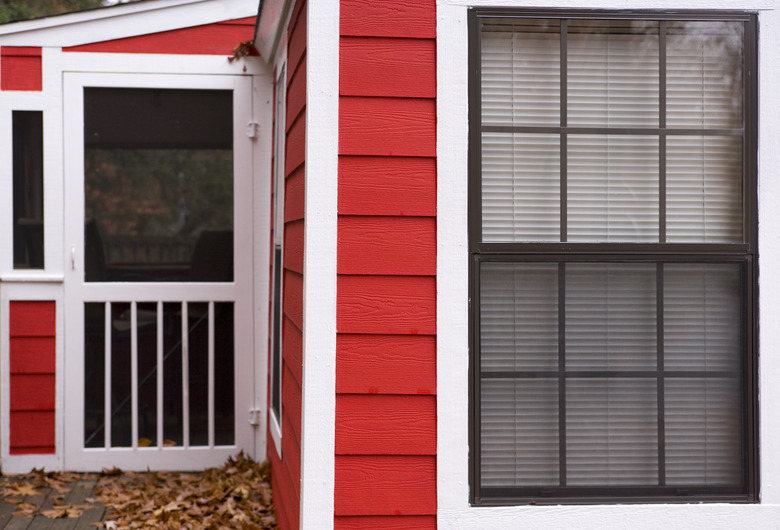How To Fix A Storm Door That Won't Close
Storm doors tend to stick more often than regular doors because they're not as solid and they're on the front lines of the weather year-round. When you find that your storm door isn't closing properly, it could be from any one of several issues, from storm door closer problems to loose screws. The good news is that it's often just a matter of adjusting the hardware and tightening the screws. Always try the simplest solutions before moving onto the more complicated ones.
Move the Door-Stop Mechanism
Move the Door-Stop Mechanism
Storm doors have stopping mechanisms to hold the door open at different distances. They come in handy when you're carrying something inside your home, but they can get in the way if they slide out too far when you want the door closed.
Open the door, and find the closing mechanism, which is the cylindrical tube on the hinge side that prevents the door from slamming shut. Find the door-stop mechanism next to it. It's the small, flat piece of metal on the closing mechanism, about the size of a postage stamp, that can slide forward and back. Slide it as far toward the hinge side as it will go, so it's not holding the door open at all.
Make Screen Door Closer Adjustment
Make Screen Door Closer Adjustment
If the door won't close all the way after sliding the stopping mechanism out of the way, you may have an issue with the door closer itself. Adjust the closing mechanism if necessary.
Most are designed with an adjustment screw at the end of the cylinder that points away from the hinge side. Using your screwdriver, turn the screw counterclockwise to decrease pressure inside the mechanism. This allows the door to close faster. Make the adjustment half a turn at a time, testing the closing rate of the door each time. If you overdo it and the screen door slams shut, adjust the screw slightly clockwise to increase the pressure and slow down the door as it closes.
Check the Jamb and Hinge Screws
Check the Jamb and Hinge Screws
If the screen door closer adjustment doesn't work, there may be an issue with the hinges. Stand outside the storm door, and open it wide enough to look at the hinges and the metal frame that's attached to the door jamb. Press on the narrow outer edge of the door, and watch to see if the frame moves at all. If it does, secure it by tightening all screws, clockwise, into the door jamb.
If your door doesn't have a metal frame and is hanging directly on the wooden door jamb, you can drive a few nails directly into the jamb to tighten it. Push on the other jamb of the doorway on the side where the doorknob lands to see if it's loose. If so, tighten or replace any screws as necessary, or put in a few nails if it's wood.
Using your screwdriver, tighten all the hinge screws, turning them clockwise. If they spin in their holes without gripping wood when you try to tighten them, it means the screws or screw holes are stripped. Take the screws out and replace them with longer screws that can reach deeper into solid wood. To get stripped screws out, press the edge of a putty knife under the screw head to give the screw threads something to grip, then turn counterclockwise.
Look for Door Sagging
Look for Door Sagging
If you notice your storm door not closing flush, you may have a sagging issue. Visually assess whether the structure of the door itself is sagging at the corners, so that it is no longer in line with the door opening. This is a common problem with older wood storm doors, and it's generally more trouble to fix than it's worth. At that point, you might be better off just getting a new storm door.
A storm door that doesn't close correctly can be frustrating. But a few simple adjustments can often fix the situation, help the door to close tightly to keep bugs, rain and other outdoor elements outside your home.
